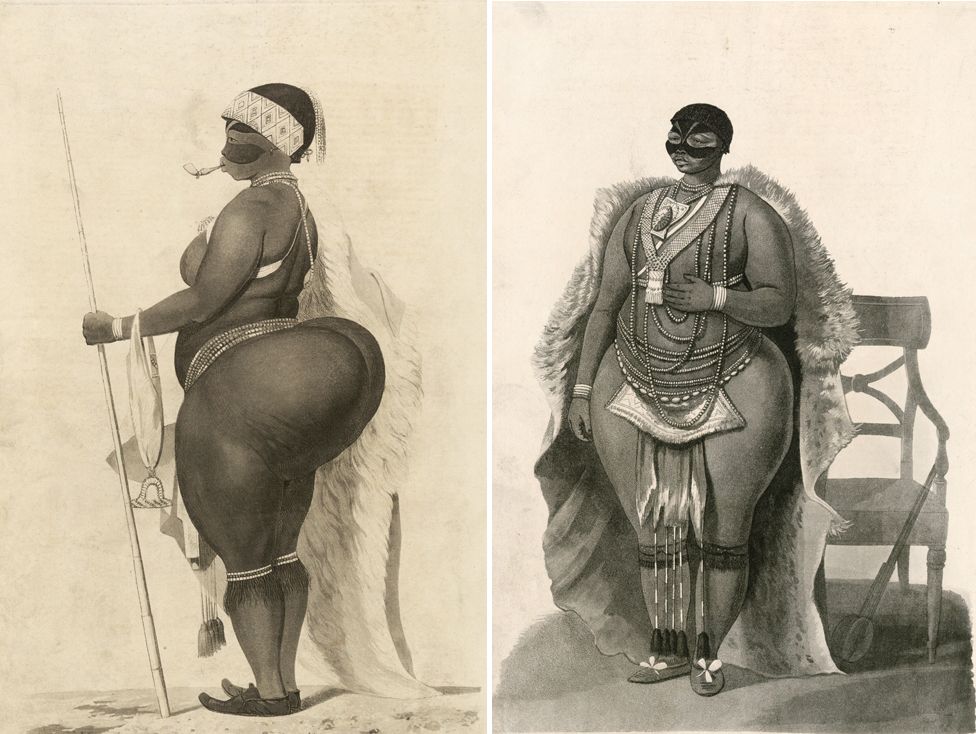
The Tragic Exploitation Of An African Woman, Sara Baartman
Sara’s life was of hardship. She was born in 1789 in the Camdeboo valley in the eastern part of the Cape Colony in South Africa. It is commonly thought she was born in the Gamtoos valley, but she moved there with her family only years after her birth.
Her mother died when she was two and her father, a cattle driver, died when she was an adolescent. She got into domestic service in Cape Town after a Dutch colonist murdered her partner, with whom she had had a baby who died.
In October 1810, although illiterate, Sara ‘allegedly signed’ a ‘contract’ with English surgeon William Dunlop and mixed-race entrepreneur Hendrik Cesars, in whose household she worked, saying she would travel to England to take part in shows.
Apparently, the contract terms were she would travel with Hendrik and Dunlop to England & Ireland to work as a servant, and exhibit for entertainment purposes, she was to receive ‘a portion of earnings’ from her exhibitions and be allowed to return to South Africa after 5 years.
Two reasons make her ‘signing’ appear dubious. The first is that she was illiterate and came from a background that didn’t write or keep records. Secondly, the Cesar families experienced financial woes and it is suspected that they used Sara to make money.

Sara’s buttocks and coloring made her object of fascination by the colonists who presumed they were racially superior. She was then brought to London where she was displayed to an English audience to view her half-naked body displayed in a cage that was about a meter and half high.
During her time with Dunlop and Cesar, the campaign against slavery in Britain was in motion and as a result, the treatment of Sara was called to question. Her ’employers’ were brought to trial but faced no real consequences.
They produced a document that had allegedly been signed by Sara and her own testimony which claimed she was not being mistreated. Her ‘contract’ was, however, amended and she became entitled to ‘better conditions’, ‘greater profit share’ and ‘warm clothes’.
In 1814 Hendrik Cesar, took her to Paris where he sold her to showman Reaux, a man who showcased animals. After being sold to S. Reaux she was raped, and impregnated by him. The child was named Okurra Reaux, and she died at five years of age of an unknown disease.
He exhibited her around Paris and reaped financial benefits from the public’s fascination with Sara’s body. He began exhibiting her in a cage alongside a baby rhinoceros.
March of 1815, she was examined by a commission of zoologists and physiologists and was also painted in the nude, they concluded that she was a link between animals and humans. Thus, Sara was used to help emphasize the stereotype that Africans were oversexed and a lesser race.
Her health declined and she died at the age of 26, of unknown causes. Within hours of death, French scientist, Georges Cuvier, was granted permission to dissect her. He paid special attention to her buttocks, private parts and brain.
After the dissection, her skeleton, together with her brain and external private parts, was mounted on a stand for display at a museum in France.

Pres. Nelson Mandela in 1995, requested that the French government return the remains of Sara so she could be laid to rest. The process took eight years, as the French had to draft a carefully worded bill that would not allow other countries to claim treasures taken by the French.
Finally, on the sixth of March 2002, Sara was brought back home to South Africa where she was buried. On 9 August 2002, Women’s Day, a public holiday in South Africa, Sara was buried at Hankey in the Eastern Cape Province.

